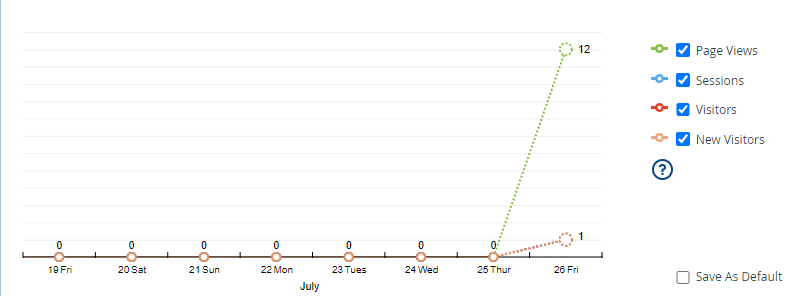PENGGUNAAN ALAT BANTU JALAN SEBAGAI FAKTOR RESIKO PERASAAN TAKUT JATUH PADA LANSIA DI KOTA DEPOK
DOI:
https://doi.org/10.32938/jsk.v1i01.89Keywords:
alat bantu jalan, Falls Efficacy Scale-International , perasaan takut jatuhAbstract
Penurunan fungsi sistem muskuluskeletal pada lansia berakibat pada meningkatnya kejadian jatuh. Hal tersebut menimbulkan perasaan takut jatuh lansia. Penggunaan alat bantu jalan merupakan salah satu faktor resiko peningkatan perasaan takut jatuh. Penelitian ini bertujuan untuk menganalisis hubungan antara alat bantu jalan dengan perasaan takut jatuh. Desain penelitian yang digunakan adalah cross sectional dengan melibatkan 111 lansia di Kota Depok dengan menggunakan multistage random sampling. Perasaan takut jatuh dinilai dengan menggunakan instrument Falls Efficacy Scale- International (FES-I) dan analisis bivariat menggunakan uji statistic chi square. Hasil penelitian menunjukan ada hubungan antara penggunaan alat bantu jalan dengan perasaan takut jatuh (p value 0,0001). Perawat perlu mengetahui cara melakukan skrining dan mengenal faktor resiko perasaan takut jatuh pada lansia.
References
Dias, R. C., Freire, M. T. F., Santos, E. G. S., Vieira, R. A., Dias, J.M. D., Perracini, M. R. (2011). Characteristics associated with activity restriction induced by fear of falling in community-dwelling elderly. Rev Bras Fisioter, 15 (5) : 406-13.
Donoghue, O. A., Cronin, H., Savva, G. M., O’Reggan, C., Kenny, R. A. (2012). Effects of fear of falling and activity restriction on normal and dual task walking in community dwelling older adults. Gait Posture, 38 : 120-124.
Foran, S., McCarron, M., McCallion, P. (2013). Expanding Assessment of Fear of Falling among Older Adults with an Intellectual Disability: A Pilot Study to Assess the Value of Proxy Responses. ISRN Geriatrics, Volume 2013, Article ID 493042, 9 pages, http://dx.doi.org/10.1155/2013/493042
Gaxatte, C., Nguyen, T., Chourabi, F., Salleron, J., Pardessus, V., Delabriere, I., Thevenon, A., Puisieux F. (2011). Fear of falling as seen in the multidisciplinary falls consultation. Annals of physical and rehabilitation medicine, 54 : 248-258, doi:10.1016.j.rehab.2011.04.002
Jang, S. N., Cho, S. I., Oh, S. W., Lee, E. S., Baik, H. W. (2007). Time since falling and fear of falling among community-dwelling elderly. International Psychogeriatric, 19 (6) : 1072–1083. doi:10.1017/S1041610206004807
Jara, J. P., Olmos, P., Abad, M. A., Heslop., P., Walker, D & Ortiz, C. A. R (2012). Diffrences in fear of falling in the elderly with or without dizziness. Maturitas, 73: 261-264
Jette, A. M. (2013). Fear of falling in older person. Toronto : Philips Lifeline
Jung, D. (2008). Fear of Falling in Older Adults: Comprehensive Review. Asian Nursing Research. 2 (8).
Kempen, G. IJM., Haastregt, J. CM., McKee, K. J., Delabere, K., Zijlstra, GA. R. (2009). Socio-demographic, health-related and psychosocial correlates of fear of falling and avoidance of activity in community-living older persons who avoid activity due to fear of falling. BMC Public Health, 9:170 doi:10.1186/1471-2458-9-170
Kim, S & So, W. Y. (2013). Prevalence and correlates of fear of falling in Korean community-dwelling elderly subjects. Experimental Gerontology. Vol. 48 (1323-1328)
Legters, K. (2002). Fear of falling. Physical journal of the American Physical Therapi Association, 82 : 264-272.
Lopes, K.T, Costa, D. F, Santos, L. F. Castro, D. P, Bastone, A. C. (2009). Prevalence of fear of falling among a population of older adults and its correlation with mobility, dynamic balance, risk and history of falls. Revista Brasileira de Fisioterapia, 13 (3) : 223-9.
Scheffer, A. C. Schuurmans, M. J, Dijk, N. V, Hooft, T. V. (2008). Systematic review-Fear of falling : measurement strategy, prevalence, risk factors and consequences among older person. Age and Ageing, 32 : 19-24. doi:10.1093/ageing/afm169.
Touhy, T. A & Jett, K. F. (2012). Ebersole and Hess’s gerontological nursing and healthy aging. 3rd Ed. Canada : Mosby Elsevier
Uemura, K., Shimada, H., Makizako, H., Doi, T., Tsutusmimoto, K., Yoshida, D, Anan, Y., Ito, T., ,,,, Suzuki, T. (2014). Effects of mild global cognitive impairment on the prevalence of fear of falling in community dwelling older adults. Maturitas, 78: 62-66
Wijlhuizen, G. J., Chorus, A. M. J., dan Rock, M. H. (2008). Fragility, fear of falling, physical activity and falls among older persons : Some theoretical considerations to interpret mediation. Preventive Medicine, 46 : 612–614
World Health Association (WHO) (2007). WHO global report on falls prevention in older age.
Downloads
Published
Issue
Section
License
This journal lisence You are free to:
- Share — copy and redistribute the material in any medium or format for any purpose, even commercially.
- Adapt — remix, transform, and build upon the material for any purpose, even commercially.
- The licensor cannot revoke these freedoms as long as you follow the license terms.














